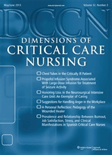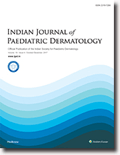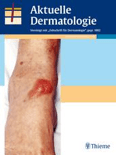
Journal of the Dermatology Nurses Association
Scope & Guideline
Unveiling New Standards in Dermatology Nursing
Introduction
Aims and Scopes
- Dermatology Nursing Practices:
The journal emphasizes evidence-based practices in dermatology nursing, showcasing studies and reviews that address patient care, nursing interventions, and the role of dermatology nurses in various clinical settings. - Patient Education and Advocacy:
A significant focus is placed on patient education, emphasizing the importance of empowering patients with knowledge about their skin conditions and treatment options, as well as advocating for their health needs. - Innovative Therapeutic Approaches:
The journal highlights advances in treatment methodologies, including the use of new technologies, telehealth, and nurse-led initiatives in managing dermatological conditions. - Research on Dermatological Conditions:
Research articles often explore a wide range of dermatological conditions, their manifestations, and management strategies, contributing to the body of knowledge in dermatology. - Quality of Life and Patient Outcomes:
The journal examines the impact of dermatological diseases on patients' quality of life, focusing on holistic care approaches that consider psychological and social aspects of patient health.
Trending and Emerging
- Teledermatology and Virtual Care:
There is a significant increase in articles addressing teledermatology and virtual care solutions, reflecting a broader trend towards digital health and the need for accessible dermatological services. - Mental Health and Dermatology:
Emerging themes focus on the intersection of mental health and dermatological conditions, underscoring the importance of psychological well-being in the management of skin diseases. - Diversity and Inclusion in Dermatology:
Recent publications emphasize the need for research and education that addresses dermatological issues in diverse populations, highlighting disparities in care and the importance of culturally competent practice. - Nurse-led Initiatives and Innovations:
An increasing number of articles focus on nurse-led clinics and initiatives, showcasing innovative practices that empower nurses and enhance patient care in dermatology. - Quality Improvement and Patient Outcomes:
There is a growing trend towards studies that assess quality improvement initiatives and their impact on patient outcomes, reflecting a commitment to evidence-based practice and patient-centered care.
Declining or Waning
- Traditional Surgical Techniques:
There has been a noticeable decrease in publications focused on traditional surgical techniques in dermatology, which may suggest a shift towards non-invasive or nurse-led approaches to treatment. - General Dermatology Education:
While education remains a core theme, there is less emphasis on general dermatology education compared to specialized topics, indicating a trend towards more niche areas of research and practice. - Historical Perspectives on Dermatology:
Fewer articles revisiting historical aspects of dermatology nursing indicate a waning interest in this topic, as the focus shifts towards contemporary issues and innovations in the field. - Basic Dermatology Knowledge:
The basic principles of dermatology, previously covered extensively, are now less frequently addressed, possibly due to the assumption that current practitioners have foundational knowledge. - Pediatric Dermatology:
There appears to be a reduction in the number of articles specifically addressing pediatric dermatology, suggesting a potential shift in the journal's focus towards adult dermatological issues.
Similar Journals

Journal of Korean Academy of Nursing
Advancing Nursing Excellence Through Research.The Journal of Korean Academy of Nursing, published by the Korean Society of Nursing Science, is a leading peer-reviewed journal dedicated to advancing the field of nursing research and practice. Established in 2008, this journal serves as a platform for innovative studies and discussions that address the challenges and developments in nursing. With an impressive 2023 category quartile ranking of Q2 in the field of Nursing and General Nursing, it ranks #58 out of 139 journals, placing it in the 58th percentile—a testament to its scholarly impact. Focused primarily on the nuances of nursing in South Korea and beyond, the journal fosters collaboration among various healthcare professionals and researchers, striving to improve nursing practices through empirical research and evidence-based insights. The journal is accessible to those seeking to engage with the latest findings and trends in nursing, further solidifying its role as an essential resource for researchers, practitioners, and students alike. For access and further details, please refer to the journal's homepage.

Dimensions of Critical Care Nursing
Empowering Nurses with Knowledge for High-Stakes EnvironmentsDimensions of Critical Care Nursing, published by Lippincott Williams & Wilkins, is a premier journal dedicated to advancing the knowledge and practices within the fields of critical care and emergency nursing. With a distinguished history dating back to 1982, this journal plays a vital role in disseminating cutting-edge research, clinical advancements, and educational resources aimed at enhancing patient care in high-stakes environments. The journal is ranked in the Q2 quartile for both Critical Care Nursing and Emergency Nursing, reflecting its significant impact on the nursing field, with Scopus rankings placing it at #11 in Critical Care Nursing and #14 in Emergency Nursing. Targeting a multidisciplinary audience of researchers, clinicians, and students, the journal serves as a critical platform for discussions surrounding innovative patient care strategies, evidence-based practices, and emerging trends in critical nursing. Although it is not an open-access journal, it provides valuable insights that are essential for shaping the future of nursing practice. Stay informed on the latest research and contribute to the evolving landscape of critical and emergency care through Dimensions of Critical Care Nursing.

Journal of Dermatology & Dermatologic Surgery-JDDS
Connecting Researchers to Pioneering Dermatologic DiscoveriesJournal of Dermatology & Dermatologic Surgery (JDDS) is a premier open access journal published by Wolters Kluwer Medknow Publications since 2018. This journal serves as a vital platform for the dissemination of cutting-edge research and advancements in the field of dermatology and dermatologic surgery. With its ISSN 2352-2410 and E-ISSN 2352-2429, JDDS strives to present high-quality articles that encompass clinical studies, innovative surgical techniques, and comprehensive reviews, thereby catering to the interests of researchers, medical professionals, and students alike. The journal has gained recognition within the academic community, evidenced by its Scopus ranks, placing it 237th out of 551 in the Medicine - Surgery category and 70th out of 142 in Medicine - Dermatology. The open access model not only enhances visibility but also encourages global collaboration and knowledge sharing in the rapidly evolving field of dermatology. Targeting the needs of diverse audiences, JDDS continues to foster an environment for scholarly communication and contributes significantly to the advancement of dermatologic sciences.

Indian Journal of Paediatric Dermatology
Innovating care for young skin.Indian Journal of Paediatric Dermatology (ISSN: 2319-7250; E-ISSN: 2319-7269), published by Wolters Kluwer Medknow Publications, stands as a pivotal resource in the specialized field of paediatric dermatology. As a peer-reviewed open access journal since 2013, it aims to disseminate cutting-edge research, clinical practices, and innovative developments that cater to the specific dermatological needs of children. The journal provides an essential forum for collaboration among researchers, clinicians, and students, facilitating the sharing of knowledge on a wide array of topics, including skin conditions unique to paediatric populations, treatment methodologies, and advancements in dermatological care. With a commitment to enhancing the understanding and treatment of paediatric skin diseases, this journal plays a critical role in shaping best practices and informing future research directions in a rapidly evolving field.

Australian Journal of Advanced Nursing
Fostering Excellence in Advanced Nursing EducationThe Australian Journal of Advanced Nursing, published by the Australian Nursing Federation, has established itself as a vital resource in the fields of nursing and advanced nursing practice since its inception in 1983. With an ISSN of 0813-0531 and an E-ISSN of 1447-4328, this peer-reviewed journal aims to disseminate high-quality research, innovative practices, and critical reviews that contribute to the advancement of nursing knowledge and education. With a commendable impact factor and currently positioned in the Q2 quartile in both Advanced and Specialized Nursing and miscellaneous Nursing categories as of 2023, the journal is ranked among the top publications in the field, reflecting its significance and influence in shaping nursing practices and policies in Australia and beyond. The journal provides open access options for a wider readership while specializing in progressive topics that address contemporary challenges in nursing, thus serving researchers, practitioners, and educators alike. It continues to be a cornerstone for advancing the professional development of nursing disciplines, supporting a community that thrives on evidence-based practice and interdisciplinary collaboration.

AKTUELLE DERMATOLOGIE
Fostering Collaboration in Dermatological Research and PracticeAKTUELLE DERMATOLOGIE is a distinguished journal in the field of Dermatology, published by GEORG THIEME VERLAG KG in Germany. With a commitment to advancing knowledge and practice in dermatological science, the journal has regularly featured research articles, reviews, and case studies since its inception in 1975 and continues to publish contributions through 2024. Despite being categorized in the lower quartile (Q4) of dermatology journals and holding a Scopus rank of #127 out of 142, it plays a pivotal role in disseminating valuable insights that support ongoing education and research in the discipline. The journal provides an essential platform for both seasoned professionals and budding researchers to share their findings, explore emerging trends, and discuss clinical practices, all while serving the needs of an evolving medical landscape. Access to its content may be restricted, but the journal remains a crucial reference for those invested in the future of dermatological research and patient care.

Pielegniarstwo Chirurgiczne i Angiologiczne-Surgical and Vascular Nursing
Transforming Surgical and Vascular Care through ResearchPielegniarstwo Chirurgiczne i Angiologiczne – Surgical and Vascular Nursing is a prominent peer-reviewed journal published by TERMEDIA PUBLISHING HOUSE LTD in Poland. With its ISSN 1897-3116 and E-ISSN 2084-9850, the journal primarily focuses on advancements in surgical and vascular nursing, serving as a vital resource for healthcare professionals, researchers, and students in the nursing field. While currently not listed as open-access, the journal upholds high academic standards and seeks to disseminate critical research findings, innovative practices, and discussions on the evolving role of nursing in surgical and vascular settings. The journal's commitment to enhancing clinical practice and education in nursing ensures its impact on both local and international health care communities, making it an essential platform for scholarly discourse in this specialized area.

Turk Dermatoloji Dergisi-Turkish Journal of Dermatology
Connecting practitioners and researchers to elevate dermatology.Turk Dermatoloji Dergisi-Turkish Journal of Dermatology, published by Wolters Kluwer Medknow Publications, is a prominent platform dedicated to advancing the field of dermatology in Turkey and beyond. With an ISSN of 1307-7635 and an E-ISSN of 1308-5255, this journal plays a vital role in disseminating contemporary research and clinical advancements within the domain. While it is positioned in the Q4 quartile of dermatology journals, its contributions are essential for academics, medical practitioners, and students averse to the latest trends and breakthroughs in skin health. The journal assures accessibility to a broad audience, fostering knowledge exchange, collaboration, and innovation. Given its unique perspective rooted in Turkish dermatological practices, the Turkish Journal of Dermatology serves as a significant resource for enhancing professional competence and driving forward the science of dermatology through its vivid discussions and case studies. For researchers seeking a dedicated venue to publish their work or for professionals eager to stay informed, this journal is an indispensable resource in the ever-evolving landscape of dermatology.

Current Dermatology Reports
Illuminating the latest trends in skin health and research.Current Dermatology Reports is a distinguished journal published by SPRINGER that focuses on the latest advancements and research in the field of dermatology. With an ISSN of 2162-4933, this journal provides a vital platform for clinicians, researchers, and students to disseminate groundbreaking findings and emerging trends pertinent to skin health. Notably recognized within the Q2 category in Dermatology for 2023, it ranks 50th out of 142 journals in the Scopus database, placing it in the 65th percentile among its peers. This accessible journal, which has been converging scholarly contributions since its establishment in 2012, plays a crucial role in bridging the gap between clinical practice and research, thereby enhancing patient care and advancing scientific understanding of skin-related issues. The editorial team is committed to the rigorous peer-review process, ensuring high-quality publications that reflect the evolving landscape of dermatology. Researchers and healthcare professionals are invited to contribute and engage with content that pushes the boundaries of knowledge in this dynamic discipline.

ARCHIVES OF DERMATOLOGICAL RESEARCH
Empowering Knowledge for Healthier SkinArchives of Dermatological Research is a premier journal dedicated to the rapidly evolving field of dermatology, published by Springer. With a distinguished history dating back to 1971 and indexed in the top quartiles (Q1 in Dermatology and Q2 in Medicine, 2023), this journal serves as a vital resource for researchers, clinicians, and students alike. It publishes innovative findings, critical reviews, and comprehensive studies that advance our understanding of dermatological conditions and treatments. The journal's commitment to disseminating high-quality research in a field crucial to public health emphasizes the importance of advancing knowledge in skin science and therapy. For those looking to explore significant advancements in dermatology, Archives of Dermatological Research offers an invaluable platform for scholarly discourse and knowledge exchange, though it is not an Open Access journal. Based in Germany, this publication attracts a global audience and remains at the forefront of dermatological research until its anticipated converged years reaching 2024.